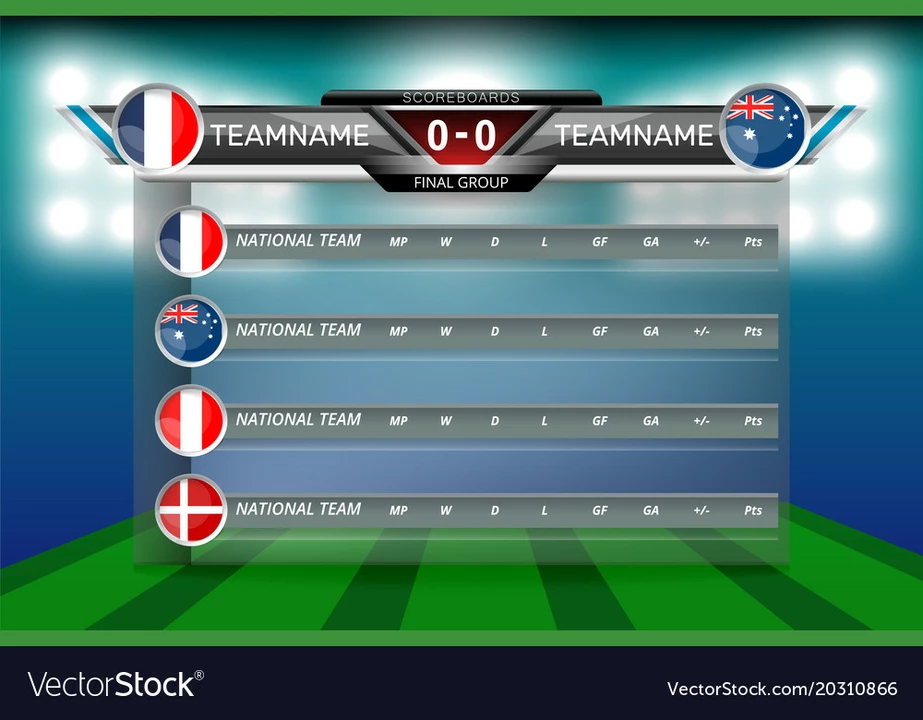Posted By Caspian Beaumont On 12 May 2023 Comments (0)

Introduction to TV Scoreboard Graphics and Game Clocks
As a sports fan, I have always been fascinated by how TV scoreboard graphics are perfectly in sync with the official game clocks. It amazes me how these two seemingly unrelated systems can work together so seamlessly, ensuring that the viewers at home are always up-to-date with the latest scores and game time. In this article, I will delve into the technology and processes used to achieve this synchronization between TV graphics and game clocks.
The Role of Broadcasters in Synchronizing Scoreboard Graphics
Broadcasters play a crucial role in ensuring that the TV scoreboard graphics are in sync with the official game clocks. They have dedicated teams in charge of managing the transmission of live events, including the display of scoreboard graphics. These teams work closely with the production crew at the venue, who are responsible for managing the official game clocks. The broadcasters receive real-time data from the venue, which they then use to update their graphics systems accordingly.
Real-Time Data Transmission and Processing
One of the key aspects of syncing the TV scoreboard graphics with the official game clocks is the real-time transmission and processing of data. This data is sent from the venue to the broadcasters through various methods, such as satellite feeds or fiber optic cables. Once the data is received by the broadcasters, their graphics systems process it and update the on-screen scoreboard accordingly. This process is done continuously throughout the game, ensuring that the viewers at home are always in sync with the official game clock.
Graphics Systems and Software
The graphics systems and software used by broadcasters are an integral part of the synchronization process. These systems are designed to handle the real-time data received from the venue and update the on-screen scoreboard graphics accordingly. Some of the popular graphics systems used in sports broadcasting include Vizrt, ChyronHego, and Ross Video. These systems allow for customized graphics and layouts, which can be tailored to match the specific requirements of each sport and broadcaster.
Accuracy and Precision of Game Clocks
The accuracy and precision of the official game clocks are vital in ensuring that the TV scoreboard graphics are in sync with the actual game time. In most professional sports, the game clocks are managed by experienced timekeepers who are responsible for starting, stopping, and adjusting the clocks as needed. They use specialized timing equipment, such as atomic clocks, to maintain the highest level of accuracy and precision throughout the game.
The Role of the Official Timekeeper
In addition to the timekeeping equipment, the role of the official timekeeper is crucial in ensuring the accuracy and precision of the game clocks. They are responsible for monitoring the game and making any necessary adjustments to the clocks. This may include stopping the clock for timeouts or injuries, as well as adding or subtracting time due to penalties or other game-related events. The official timekeeper also communicates with the production crew at the venue, who then relay this information to the broadcasters.
Dealing with Delays and Lag
One of the challenges in syncing the TV scoreboard graphics with the official game clocks is dealing with delays and lag. Delays can occur due to various reasons, such as satellite transmission issues or buffering in the graphics systems. To counteract these delays, broadcasters often use a combination of techniques, such as minimizing data transmission delays, optimizing graphics processing, and using dedicated hardware for real-time data processing.
Backup Systems and Redundancy
Given the importance of accurate and synchronized TV scoreboard graphics, broadcasters often employ backup systems and redundancy measures to ensure that the graphics remain in sync with the official game clocks. This may include using multiple data transmission channels, redundant graphics systems, and backup timing equipment. These backup systems are designed to take over seamlessly in case of any failure or disruption, ensuring that the viewers at home continue to receive accurate and up-to-date information.
Conclusion
Syncing TV scoreboard graphics with the official game clocks is a complex process involving multiple teams, technologies, and processes. From the accuracy of the game clocks to the real-time transmission and processing of data, every aspect plays a crucial role in ensuring that the viewers at home are always in sync with the game. As technology continues to evolve, we can expect even more advanced systems and techniques to be developed, further enhancing the viewer experience and keeping us glued to our screens during our favorite sporting events.